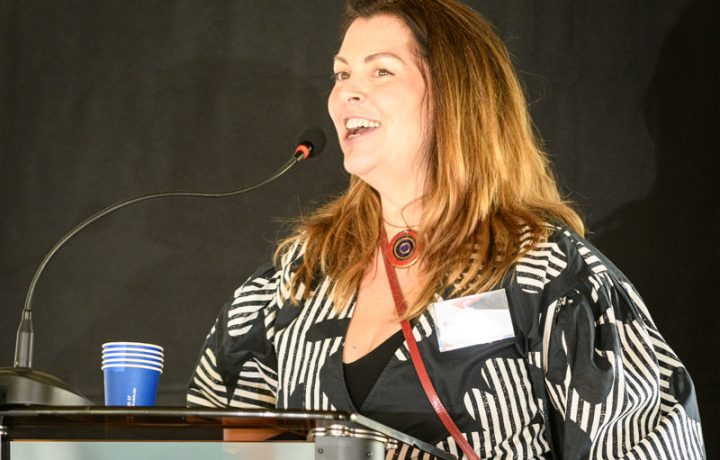- 5 October 2022
- Posted by: Canberra Innovation Network
- Categories: General News, Women in Innovation

Any true Canberran knows that this city is more than politicians, museums, and roundabouts—beneath it all is a sustainable, beautiful, and eccentric little city.
But what if it could be made better?
Earlier this year, the Canberra Innovation Network (CBRIN) and ActewAGL put out the call for innovative ideas that could change the future of our city—asking locals to throw their hats into the innovation ring by submitting an idea, concept, or proposal to make Canberra a better place for our growing population.
HerCanberra sat down with Cris Clucas—one of the winners of the Adaptive City Challenge—to talk about making Canberra a better place with real and necessary changes and the power of innovation.
Why did you enter the Adaptive City Challenge?
The CBRIN Adaptive City Challenge asked Canberrans to enter an idea that would make Canberra a better place by 2040. I saw an article about the challenge in HerCanberra and it piqued my interest as I love sci-fi and daydreaming about how amazing the future could be for all of us if we had developments such as a four-day work week, the ‘robots have the jobs’, corporations pay their fair share of taxes and there is Universal Basic Income for all.
What was your idea and how will it make Canberra a better place?
In my entry, I spoke about an alternative, connected housing model called co-housing, which was created by a Danish architect in the 1970s and quickly spread throughout Europe, North America and to Australia. Co-housing is in high demand in Denmark and around the world but has struggled in some parts of Australia due to planning and finance hurdles.
Why do you think co-housing is the solution to isolation?
A co-housing development is 30 or so individually owned dwellings with all the usual amenities—bathroom, lounge room, bedrooms, kitchen—on shared land with a shared common building. The common building usually features an industrial kitchen where, for example, there may be a roster of residents cooking every weeknight.
Imagine coming home from work to a home-cooked meal and being able to eat it with your neighbours in the common building or head home for some solo time, depending on how you are feeling. So, you would take your turn to cook for your neighbours once a month and enjoy all that connection over delicious meals—amazing!
Co-housing residents usually have similar values and they come together to manage the community and share activities, which could be anything they have in common from fixing cars to yoga and playing music.
The layout of a co-housing development is like that of a village. There are no roads in the middle of the development—only pathways—and the layout of the houses, other buildings, and gardens are created so there is privacy and your own space while having the chance for connection between people as you go about your daily activities. When people live a more connected life in this way, it has been shown they have less need for support services, and they live longer lives.
How did it feel when you heard you had won the Adaptive City Challenge?
I was one of 14 teams through to the final of the challenge, and in a CBRIN workshop, I learnt how to write a three-minute pitch. All 14 teams presented in person on the day, and I was second last. There were three winners in the challenge, and I was the last to be announced—it was a huge shock and an amazing feeling that I will never forget!
The win changed my life as I used the $5,000 prize money to create a Co-housing Symposium—a one-day conference, which was definitely a success. I could see in those who attended that there were multiple threads of commonality, strengthening the pathway of co-housing becoming a reality in Canberra.
From entering earlier this year to now, what has your journey been like with the Adaptive City Challenge and CBRIN?
When I say winning this challenge has changed my life, I mean it. Working with Cohousing Canberra President, Fiona Game, I used a video of my three-minute co-housing pitch to approach a group of experts from around the country and asked if they would participate in a Co-housing Symposium in Canberra—and they all said yes! I put it down to having that snappy, entertaining, informative story all in one short pitch. It just goes to show the elevator pitch format works.
Now that you’ve held the symposium, what’s next for you?
The Symposium was a huge success, which will ripple out over the coming years in Canberra and beyond, as the seed of living in a co-housing development was planted for those in attendance.
I received a grant from Burners Without Borders, a not-for-profit organisation that supports grassroots community initiatives, to record the presentations so they will be used to help spread the word about co-housing in Canberra and around the country. It is my hope I will be living a connected life in a flourishing co-housing development here in Canberra before 2040. I have CBRIN and the challenge sponsor ActewAGL to thank for that.
Article originally posted by HerCanberra
